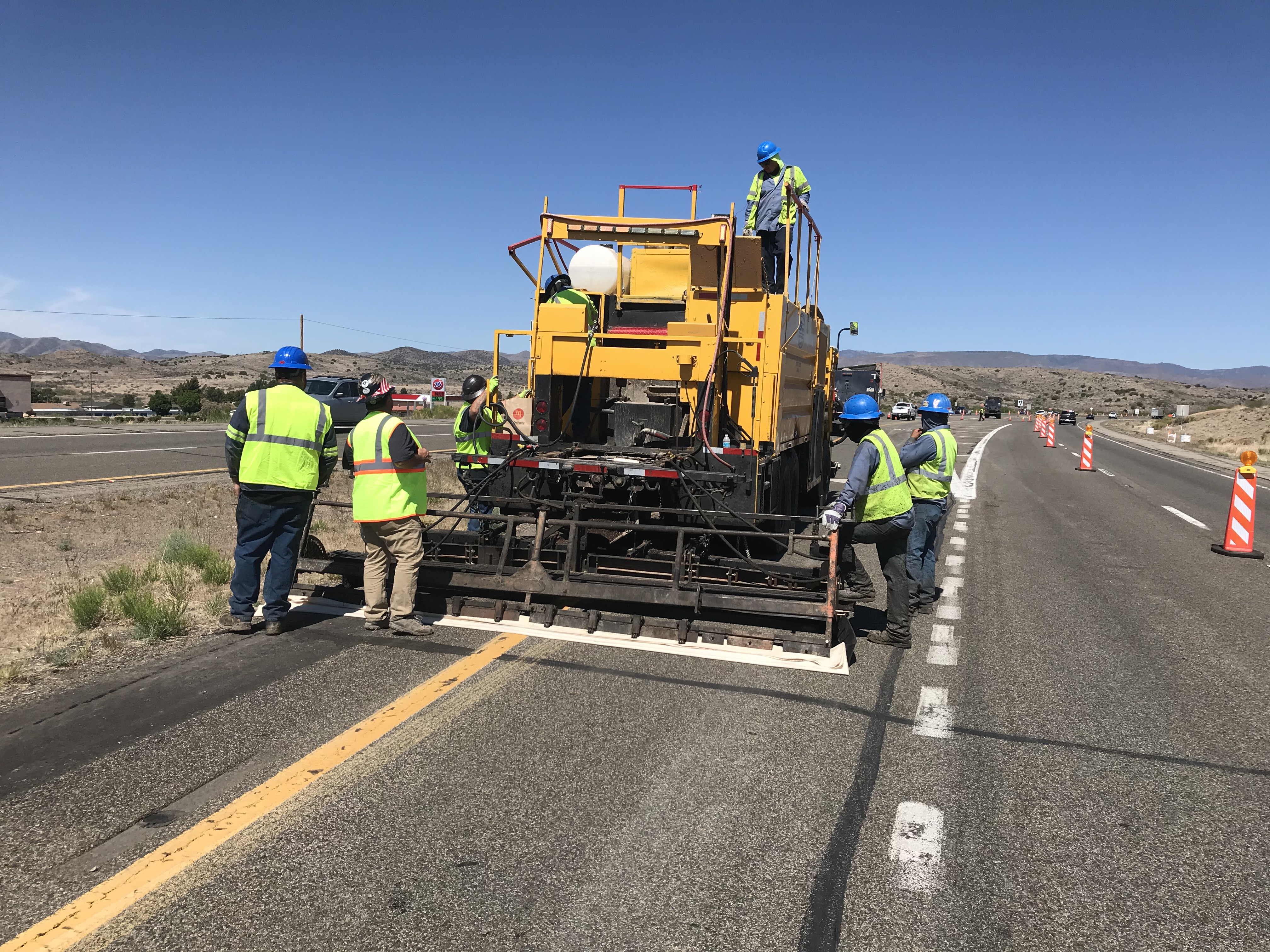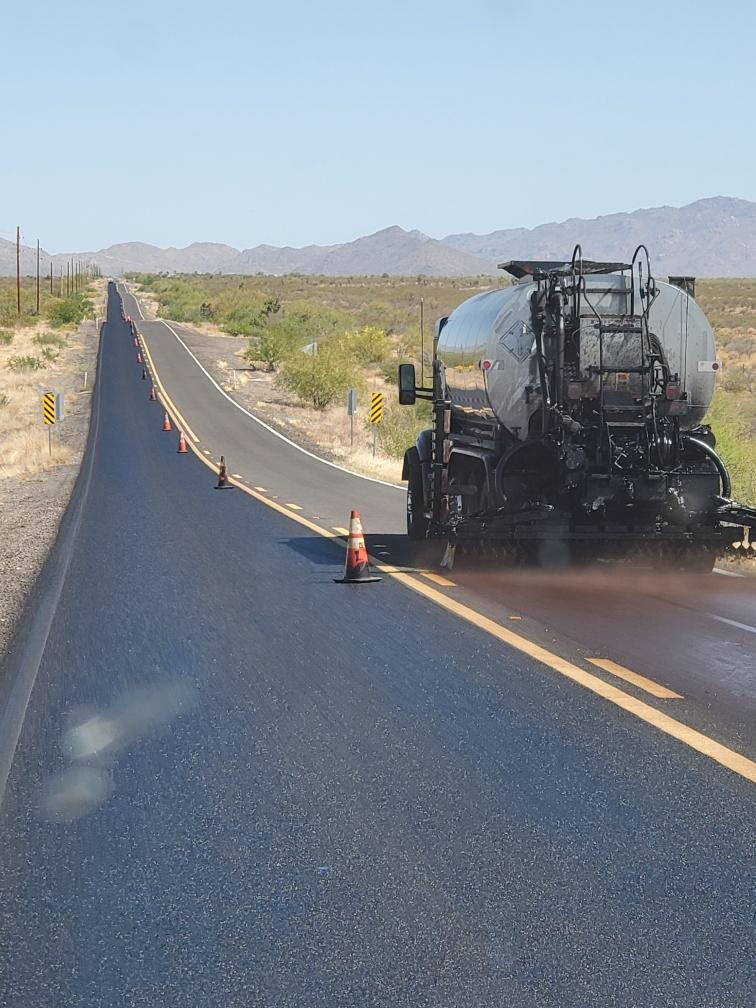Let's talk pavement preservation - and why you'll see it this summer
Let's talk pavement preservation - and why you'll see it this summer

You may hear this phrase often, especially during the summer.
"Drivers should prepare for some delays on this state highway due to pavement preservation work between this and that milepost."
Maintaining state highways and freeway is a full-time gig for us. In fact, the tentative 2022-2026 Tentative Five-Year Transportation Facilities Construction Program even has $1 billion allocated for pavement preservation over the next five fiscal years.
But what exactly do we mean when we say "pavement preservation?"
To answer that question we turned to Andrew Roth, the assistant district engineer for ADOT's Northwest District. He broke down for us the major types of pavement preservation work crews get up to this time of year. In order of ascending cost we have:
Fog seal: This is the most common type of pavement maintenance. As we explained in an earlier blog post, fog seals contain emulsion – remember that's asphalt binders and water – onto a road to rejuvenate the asphalt and restore lost flexibility to the roadway surface. As Roth explained, the sun causes paving to start oxidizing, and fog sealing helps keeps that oxidization from getting into the deeper, structurally significant part of the road.

Chip seal: We've told you about chip seals before, where aggregate (crush gravel) and an emulsion (asphalt binders plus water) are laid down together to form the new top road surface. Turns out though that there are two different types of chip seal. The first is what we just described. The second is known as a hot application, where different, heavier asphalt binders are sprayed on the roadway surface at temperatures between 350 and 400 degrees Fahrenheit and covered with chips that are pre-coated in asphalt.
Slurry seal: This type of pavement preservation involves an emulsion, aggregate and a bit of dry-powder cement which is mixed in a specialized machine. The mix looks like chunky chocolate milk, Roth said, and looks brown on the road until it cures, when it looks like typical black asphalt. A slurry seal is especially good at sealing up cracks and keeping out water.
Micro-seal: Finally we come to the micro-seal, which is a lot like a slurry seal, but here you are getting into some heavy-duty chemistry, as the asphalt binders in the emulsion have different polymers so it acts different. A micro-seal can also be used to fill ruts, which alleviates any issues with water collecting on the road.
There also is something called a "cape seal," which is basically a chip seal covered by a slurry seal or micro seal.
So those are the different types of pavement work you can expect to see while out on the road this summer. But there's a good reason why you see it while it's summer. Paving needs a specific temperature range that, depending on the work being, done cannot be either too cold or too hot. For example, a chip seal can only be applied when the pavement surface temperature is at least 85 degrees and the air temperature is at least 65 degrees and rising. A chip seal application must stop once the air temperature is 70 degrees or less and falling, while a slurry seal may be applied when both the pavement and air temperatures are above 45 degrees and rising. It has to stop if either the pavement or air are below 55 degrees and falling. And a hot application chip seal can't be done if the daytime air temperature will exceed or are forecast to exceed 110 degrees the day before, the day of or two days after it's applied.
Furthermore, these treatments cannot be applied if rain is forecast within 24 hours of the pavement work. The same is true if there is the possibility of freezing weather forecast, Roth said.
That means paving work usually has fairly narrow time windows when it can be done, which become more narrow as you rise in elevation.
As you might expect, one the most important elements for pavement preservation is having the right temperature range and plenty of sunshine. Those help evaporate the water used in the asphalt emulsion, which allows the pavement to cure properly. As we explained in an earlier blog, this is one of the major reasons for doing paving work during the day. While some of this could be done at night, and is under special circumstances, without daytime highs and sunlight, it takes much longer for the road surface to be ready for the driving public again.
"It's a lot of artwork when it comes to applying these pavement treatments because of all the elements you are trying to monitor that drive construction," Roth said.
